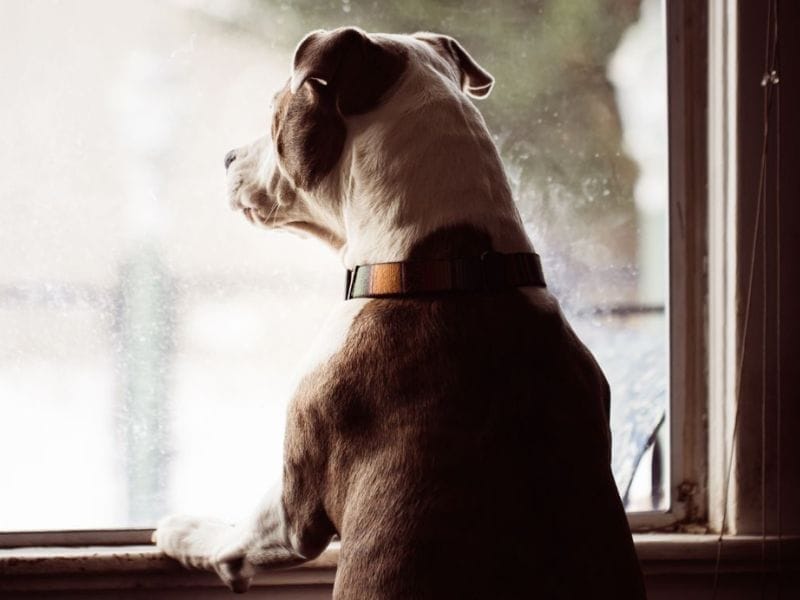Dogs are a social species that rely on their human family for love and companionship. This special bond is what makes them our best friends.
Problems can arise when our dogs struggle to spend time alone without their favourite humans; over time this can develop into separation anxiety.
Preventing seperation anxiety
There are a number of ways that you can help prevent separation anxiety developing whilst you are home for such a long period of time. Below we have listed some general advice.
Keeping to a routine – dogs thrive on routine and any disruption to this can raise stress levels. Keeping to a rough schedule can be a great way of reducing stress levels as the dog continues to have their expectations met.
As part of your daily routine ensure that you continue to leave your dog home alone whilst you pop out for a walk or to the shops. Not leaving your dog at all is likely to cause an escalation in stress when they start being left again after lockdown. If your dog is not used to being left at all then you can build the time up slowly and whilst monitoring your dog’s anxiety levels. Use the below tips in conjunction with short periods alone.
Desensitize your dog to each part of your leaving routine to prevent each action solely becoming an indicator that the dog is about to be left. For example, sometimes pick up your keys and sit down on the sofa, put your coat on and put the kettle on etc.!
Creating a feeling of safety for your dog in their environment is vital in prevention of separation anxiety. To do this ensure they have a sleeping area they feel secure in, in a familiar space.
Providing your dog with enrichment items not only keeps them busy but encourages independence. It is important that you don’t cause your dog stress by completely ignoring them if they are seeking reassurance within these sessions but instead encourage them back to their activities.
Investing in Adaptil or Pet Remedy products can assist your dog in feeling calmer when left home alone.
Leaving classical music on in the background can aid your dog in feeling sleepier and less distracted by external noises that may trigger stress e.g. car doors slamming.
Utilizing scent work as part of your dogs daily activities can help mentally tire your dog and aid their general wellbeing.
Signs of separation anxiety can include:
- Restless behaviour as the owner is getting ready to leave the house.
- Following the owner constantly around the house.
- Showing an over exuberant greeting when owners return home.
- Not eating food/enrichment until owner gets home.
- Stealing or moving objects/blankets – the dog may take these to their bed or simply move them to a new location.
- Destructive behaviours.
- Vocalizations – with milder separation anxiety this often occurs when the owner leaves but may settle after a short time. When separation anxiety worsens a dog may vocalize for most of the time the owner is out. Vocalization may include barking, whining, howling.
It is a good idea to invest in a pet cam to turn on when you go out in order to monitor your dog for signs of stress when left.
If the anxiety worsens you may start to notice more severe signs such as:
- Destructive behaviours that could include destroyed furniture and ripped-up carpets.
- Toileting indoors
- Self-mutilation – this can range from a dog obsessively licking its paws to a dog injuring itself.
- Vomiting
- Attempts to escape e.g. chewed door frames, smashed windows.
Advice
If your dog is displaying even mild signs of separation anxiety it is advisable to get in touch with a qualified behaviourist for support before the anxiety worsens. Speaking to a behaviourist will also avoid misdiagnosis as these signs could also indicate other issues.
Please CLICK HERE to find out about 1-2-1 sessions with our behaviourist.
How long can you leave dogs alone?
Our friends at Age Times have written an article all about leaving dogs alone and Cheltenham Animal Shelter’s Operations Manager, Nicky Spanswick, provided a comment for the piece.


